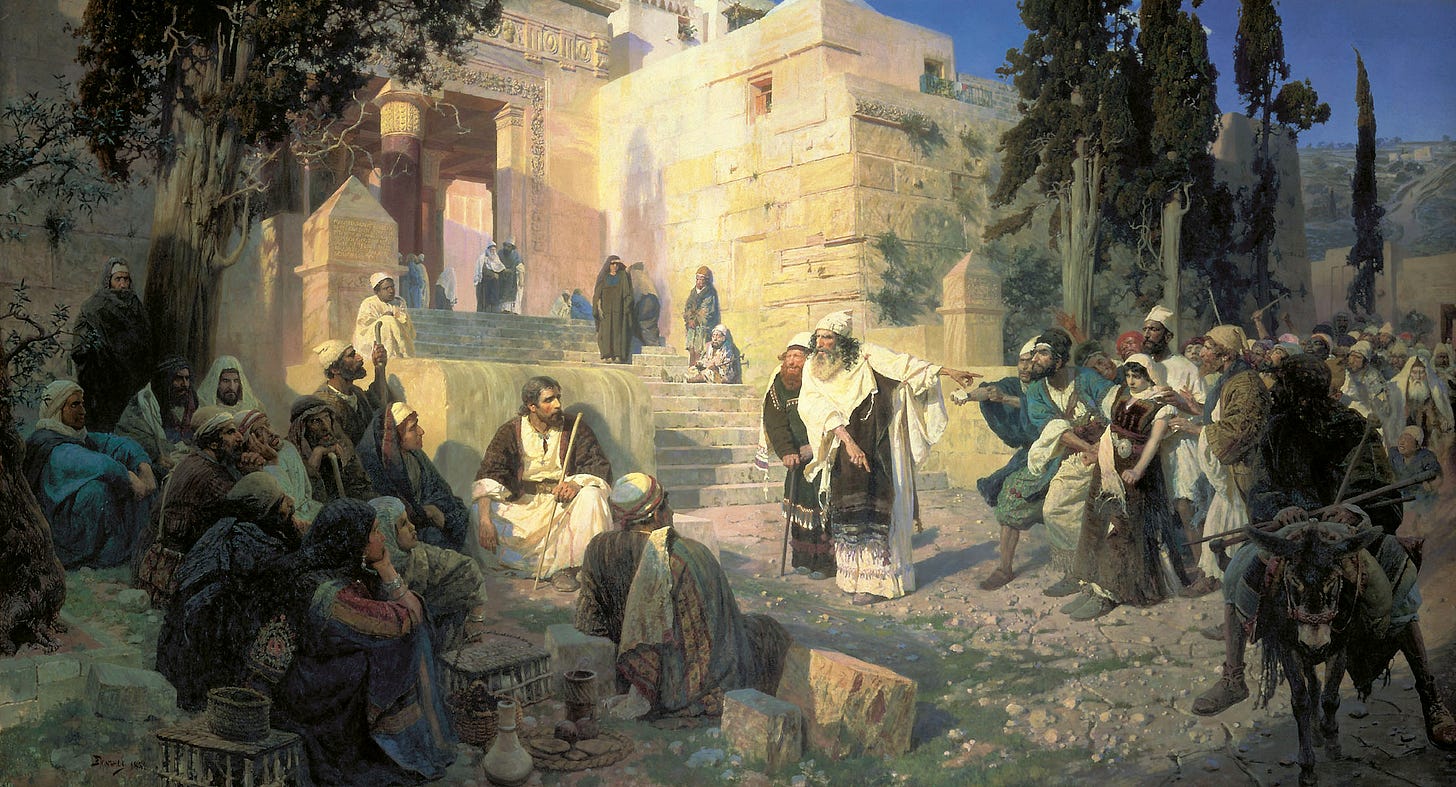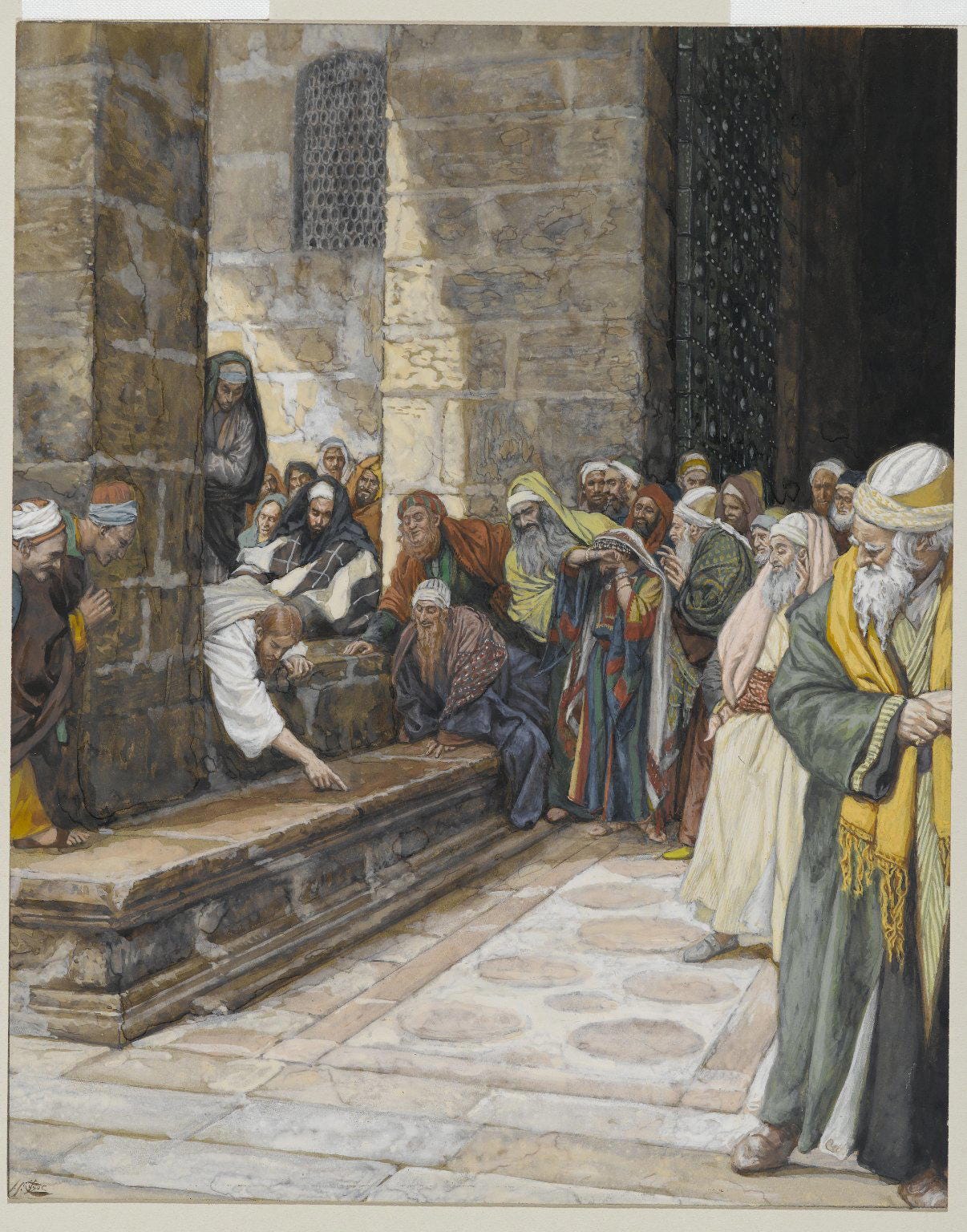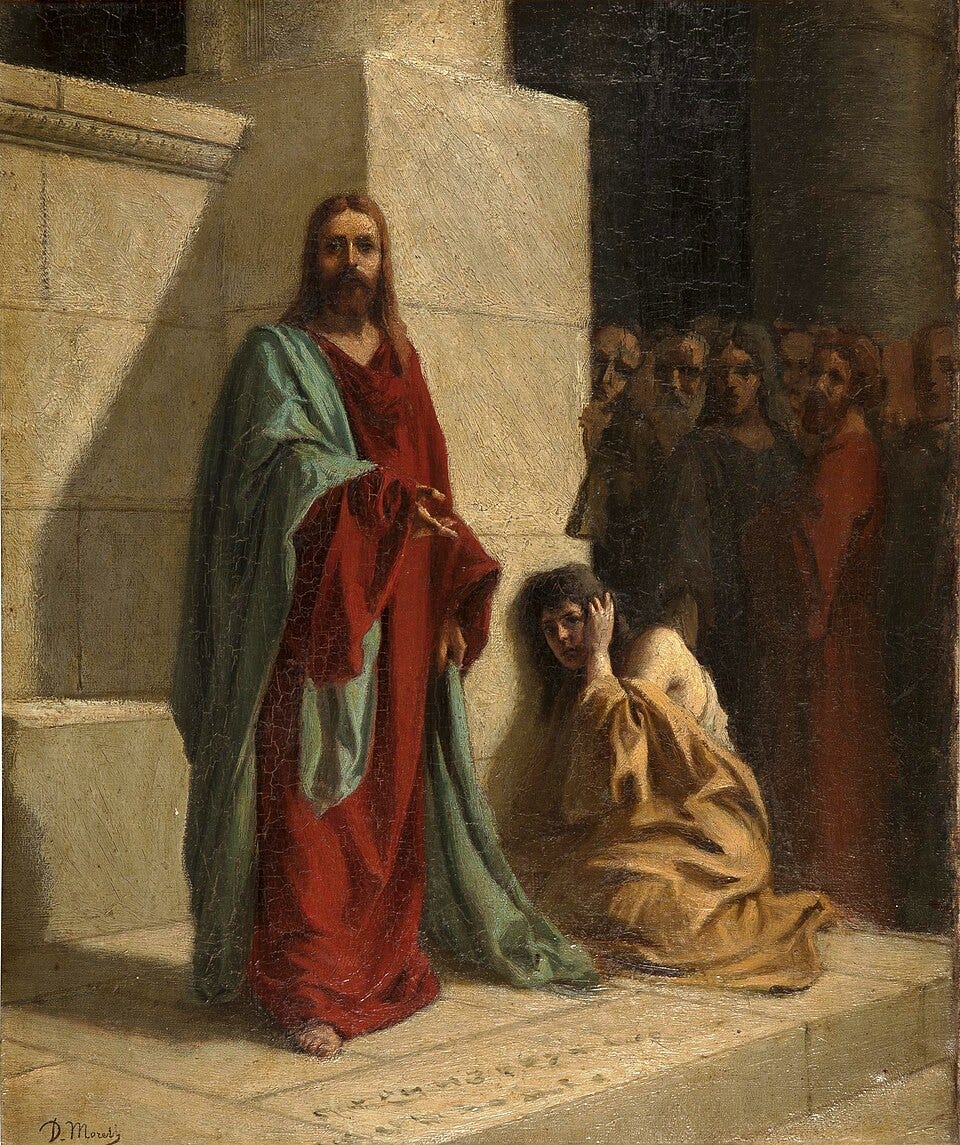Editor’s Note: This is a summary of a homily that Fr. Ben Daghir preached at Holy Spirit Parish. The Gospel reading was John 8:1-11 (The Woman Caught in Adultery).
There’s a sound that echoes in this Gospel story that we often miss. It’s not the shouting of the angry mob. It’s not the cold silence of shame. It’s not even Jesus’ calm, piercing voice.
It’s the sound of stones hitting the ground—one by one.
The scribes and the Pharisees came armed with stones. And while we rightly focus on the stones the scribes and the Pharisees dropped that day, I want to talk about a different stone—the one we never hear fall to the ground. The one the woman may have been holding in her own hand for many years.
Imagine her for a moment: dragged out, publicly humiliated, ashamed, fully exposed—not only to the crowd, but to herself. It’s easy to picture a stone in her hand—not to throw at others, but to turn on herself.
The kind of stone that carries the voices we sinners know too well:
"How could you do this?"
"You’re better than this!"
"You’re so weak."
"You always mess up."
"You’re not worthy."
"You’re nothing."…“You’re a failure.”
These are the stones that hurt the most—not necessarily the stones thrown at us by others, but the ones we throw at ourselves. The stones no one sees. The stones we’ve carried in secret for years. The stones shaped by regret, shame, fear, perfectionism, and inner criticism.
But here’s a beautiful truth in today’s Gospel: Jesus never picked up a stone.
His hands were always empty and ready to embrace.
Though Jesus was the only one without sin, the only one who could have thrown a stone…He didn't. Instead, Jesus stooped low and wrote in the sand—twice. And maybe what was written in the sand wasn’t meant for the accusing crowd at all. Maybe the writing in the sand was meant for her. For the one who couldn’t lift her eyes because of the weight of the stone in her own hand, the weight of shame and disgust with oneself.
What did Jesus write in the sand?
We don’t know. But maybe Jesus wrote: "Drop your stone."
Maybe Jesus saw into her heart and knew she’d been throwing stones at herself for years.
As the Gospel states, “Jesus bent down and began to write on the ground with his finger.” Jesus didn’t just look down at the woman caught in adultery, but also knelt down next to her. Like washing the disciples’ feet, Jesus takes the lowest place with the woman caught in adultery.
Pope Francis once said: “We should only look down on someone for one reason: to lift them up.”
And that’s exactly what Jesus does.
Jesus lifts her. Not by denying her sin, but by seeing her as a daughter, as a sister, and as a fellow pilgrim. Not by excusing her past, but by inviting her into a future. Not by condemning, but by acknowledging her and challenging her: “Woman, where are they? Has no one condemned you?” Jesus listens to her say, “No one, sir.” Then Jesus responds, “Neither do I condemn you. Go, and sin no more.”
So today, let me ask a few questions for all of us to consider:
What stone is in our hand?
Is it a stone of resentment toward someone else?
A stone of judgment or gossip or harsh words?
Or is it the one you use against yourself?
The one that tells you that you're not enough, that God couldn’t love someone like you?
What words do you speak to your own heart in silence?
Would you say those words to someone you love?
Would Jesus say those words to you?
And finally:
What do you think Jesus might be writing in the sand next to you today?
Is it “Drop your stone?”
Is it your name or is it the name of someone you need to forgive?
Is it a word of healing and forgiveness?
This Gospel ends in a sacred silence. The crowd has vanished. Each stone from the scribes and the Pharisees now quietly rests on the sand. Jesus is alone with the woman. There’s silence. There’s peace.
We know the scribes and the Pharisees walked away.
We know their stones hit the dirt.
But we don’t know if she ever dropped her stone.
Jesus said to her, “Neither do I condemn you. Go, and from now on do not sin any more.”
Could she forgive herself after Jesus had forgiven her?
I believe she did. I believe in that holy silence, the stone followed the path of her tears. The stone fell to the ground. I believe she let it go right were Jesus had written in the sand.
Let’s do the same.
Drop the stone.
However big or small the stone is. Whoever it’s for…Drop it.
Drop your stone.
Fr. Ben Daghir













Dear Father Ben,
What a powerful reflection! Thank you so much for continuing to nurture our faith and inspire us through these life-changing reflections.
Leelamma